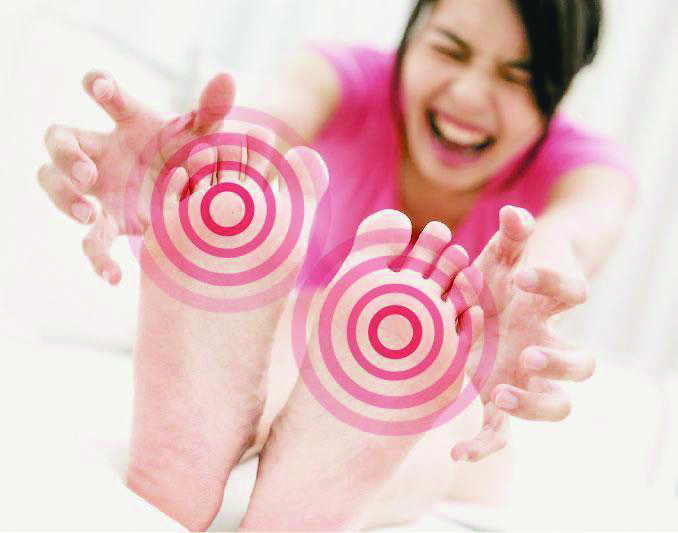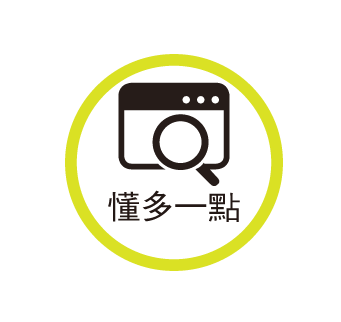Wrong application to accelerate the growth of fungi in Hong Kong foot ointment
[ad_1]
Text: Chen Zhenji “Ming Pao”
Itchy and peeling feet, could it be “Hong Kong foot”?
There are many external medicines for tinea pedis, with different ingredients. Even if the same brand has different dosage forms, which one is right for you?
Why does Hong Kong Athlete’s foot break out repeatedly and cannot be cured even though he has been prescribed medication? Be careful of long-term use of “anti-inflammatory” ointment, which will accelerate the growth of fungus and make the condition worse!

(Hong Kong News) Athlete’s athlete’s foot, commonly known as “Hong Kong’s foot”, is a fungal infection. Many topical plasters can be found in pharmacies for treatment. Tung Ng Yi-ching, Association of Hong Kong Hospital Pharmacists, said that to treat tinea pedis with mild symptoms, topical antifungal drugs are the first choice and applied to the affected area. Such topical drugs do not require a doctor’s prescription, but some of them need to be sold under the supervision of a pharmacist.
Choose dosage form according to individual needs
“Topical antifungal drugs have two principles, one is to kill fungal cells, and the other is to inhibit the growth of fungi, but they cannot be killed directly.”
Most of the drugs that can kill fungi on the market belong to azoles. “Drugs with azole at the end of their English names belong to azoles, such as miconazole, clotrimazole, ketoconazole, Isoconazole (isoconazole) and others.”
“Each of them has a slightly different composition, but the pharmacology is the same. Other non-azole antifungals that kill fungi include different types like terbinafine and amorolfine.”
Another drug, tolnaftate, for the treatment of Athlete’s foot is to inhibit the growth of fungi. This type of drug can be effective in the initial stage, but it is more likely to relapse. Wu Yiqing suggested that azoles or terbinafine and other drugs that can kill fungi should be preferred. As for which ingredient is the most effective?
She pointed out that it varies from person to person, “It is usually recommended that patients try which one is more suitable for them, because each person’s skin and the fungi infected are slightly different, it is actually a trial and error (trial and error); Dosage forms, such as ointment, spray, and dry powder, should be selected according to the patient’s symptoms, convenience and acceptance.”
No matter which dosage form you choose, remember to wash and dry your feet before each use, and then apply the medicine evenly on the infected area and its surroundings, especially between the toes, where peeling and itching are most likely to occur.
Wu Yiqing listed the current common dosage forms and indications:
˙cream: usually white, cream-like, more moisturizing
˙Gel: transparent or translucent, with lower oil content than cream, more refreshing
˙Ointment (ointment): relatively greasy, suitable for patients with dry and peeling skin
˙Spray: easy to use, non-sticky, can be sprayed into shoes or socks; relatively dry, not suitable for patients with dry skin and peeling skin
˙Dry powder: soaked in water after dissolving, relatively refreshing, but rare in Hong Kong
Need to complete the course of treatment to avoid recurrence
In addition to the dosage form, the length of the drug effect is also one of the considerations. “Terbinafine advertises that it can be cured in 1 week after being used once a day; while other ointments, pharmacists usually recommend using it for 3 to 4 weeks, or after the symptoms disappear, and then use it for 1 week.” Weeks, to ensure that all fungi are killed, reduce the chance of recurrence, and adjust the medication according to the patient’s condition.”
He reminded that the most important thing is to persist in completing the entire course of treatment. “Many people apply it for 2 days and stop when they feel that it is not effective. In fact, it is not that the ointment is useless, but that it has not been used to the extent that it can be effective.” In addition, even if the symptoms have disappeared , should still complete the entire course of treatment, otherwise there will be a risk of recurrence.
In the past, the old medicine used to treat Athlete’s foot was mainly salicylic acid. Wu Yiqing pointed out that salicylic acid is mainly used for exfoliation and cannot kill fungi, so it is rarely used now.
“Some patients have thickened keratin, and it is difficult for the drug to penetrate into the skin. In this case, salicylic acid is used as an adjuvant treatment.” These are usually two-in-one compound drugs, in addition to salicylic acid, boric acid ( boric acid), used to inhibit fungal growth and treat Hong Kong’s foot. “However, exfoliating ingredients are more irritating to the skin, and patients may experience side effects such as allergies, mild burning sensation, redness or itching, so it is usually not recommended as the first-line treatment.
Steroids do not kill fungi
She said that it is worth mentioning that although topical steroid drugs used to treat skin inflammation can be used for initial anti-inflammatory and anti-itching, Wu Yiqing does not recommend long-term use for the treatment of athlete’s foot. “Steroids are anti-inflammatory drugs that can help relieve itching. Anti-inflammatory, but steroids are not used for anti-fungal; if used for a long time, the skin will become thinner and the growth of fungus will be accelerated, which may worsen the condition of athlete’s foot or fungal infection at any time, especially the treatment of tinea pedis is usually longer, so it must not be used Misuse.”


acute dermatitis reaction
Herpes with different etiologies
Athlete’s foot, eczema, sweat herpes, also have symptoms such as peeling, itching, and blisters, which is confusing!
Tinea pedis is a fungal infection, and eczema is an allergic skin reaction. As for sweat herpes, “this is a reaction of acute dermatitis, which may be caused by different causes; tinea pedis and eczema may also be one of the reasons.”
Dr. Chen Junyan, a specialist in skin and venereal disease, explained that when infected with fungi, some people just peel off the skin between the toes and itchy; but a small number of people develop acute dermatitis due to the overreaction of the immune system to the fungus. In addition, people suffering from eczema may have sweat blisters on the palms and soles of their hands and feet during spring and summer or when they sweat too much.
“Hydroherpes can also be caused by contact dermatitis, chemotherapy or targeted drug therapy, or even simple hyperhidrosis.”
Find out the cause of the symptoms based on lifestyle habits
When sweat herpes appears, how can we tell whether it is caused by athlete’s foot or eczema? Chen Junyan pointed out that although the symptoms of the two are similar, it is not difficult to distinguish them, and the diagnosis can be based on the patient’s living habits and clinical symptoms. “Tinea pedis is most commonly characterized by peeling and itching. If blisters appear at the same time as peeling, the blisters are in the shape of a circle, with red rashes on the periphery, and if there is gray onychomycosis, the possibility of tinea pedis causing sweat herpes is greater.”
If the patient has recently been to high-risk places such as swimming pools, hospitals or saunas, these can help confirm.
He said that on the contrary, if the patient has been troubled by eczema, eczema is prone to appear on the inner side of the hands and feet joints, and he or his family members have allergies, including nasal allergies, asthma and eye allergies, most of the sweat herpes is caused by atopic dermatitis . In addition, some people will develop sweat herpes purely in a specific season, such as spring, without any evidence of eczema, which may be related to excessive sweating.
In severe cases, consider prescription oral medication
No matter what the cause of sweat herpes is, in the treatment of acute dermatitis, Chen Junyan said that externally applied steroids are usually used first, and the medication time is short, mainly to reduce allergic reactions and accelerate anti-inflammation. If herpes is caused by atopic dermatitis, it usually resolves with topical steroids.
“If the itching is severe, oral anti-allergic drugs such as antihistamines may be added to help.” If the sweat herpes is caused by tinea pedis, topical steroids should be used to reduce dermatitis, and the drug should be stopped, and antifungal drugs need to be used. To inhibit fungi, oral antifungal drugs should only be prescribed in severe cases.

[ad_2]
Source link

![[Love Wants Sexual Happiness Series 358]Find the culprit and overcome psychogenic erectile dysfunction. Don’t let pressure affect your sexual happiness.](https://chinathenews.com/wp-content/uploads/2024/04/171111-780x420.jpg)

![[Wanqingyi Care]My health, my rights, customized medical methods in the last stage of life](https://chinathenews.com/wp-content/uploads/2024/04/ZZ1-100-780x420.jpg)
![[Kidney Transplantation Special Topic]The survival rate of transplanted kidneys is high without dialysis treatment three times a week](https://chinathenews.com/wp-content/uploads/2024/04/1311-780x420.jpg)



